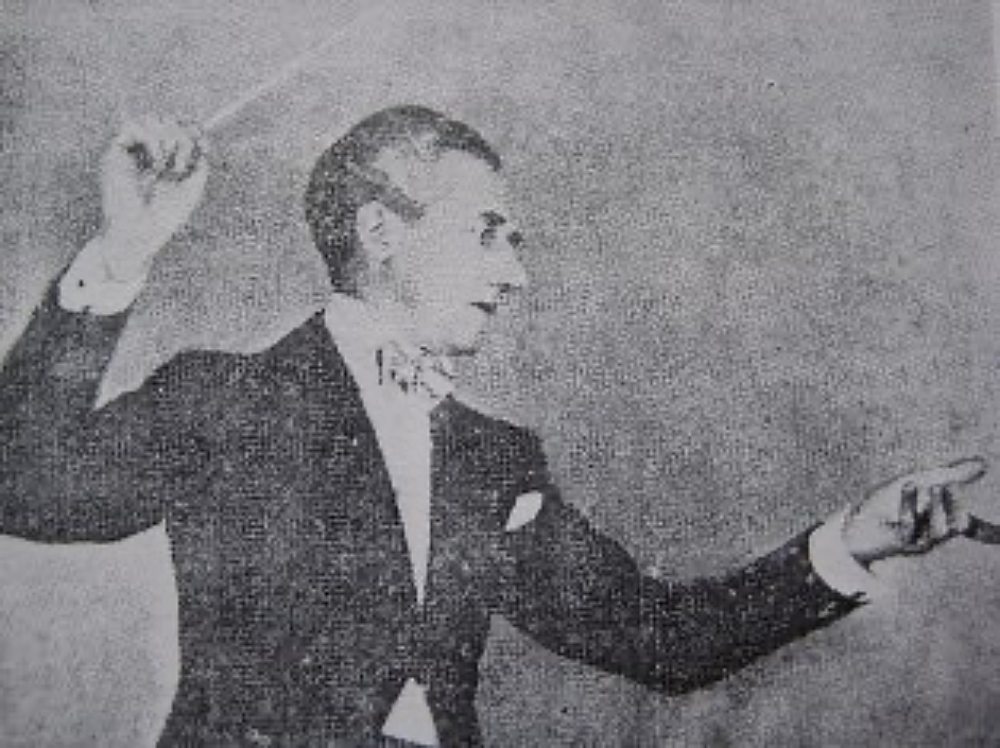Those we’ve loved and lost
MY recent recollections of the early 1950s gave a flavour of local life half-a-century ago. The article sparked off reminiscences for many readers but it also encouraged 86-years-old Miss K.E. Price, of George V Avenue, Worthing, to put pen to paper and list a few of her personal regrets.
This is what Miss Price wrote……

“Dear Freddie Feest,
“YOUR article on May 29 omitted one of Worthing’s lost attractions – the Municipal Orchestra. It was the orchestra (20 players with conductor Herbert Lodge) which encouraged my father to look for a house at Goring-by-Sea in 1948.
It was November before we left our home in Bowdon, Cheshire, for Sea Lane, Goring. In those days the development had hardly started and we backed onto a field. At night I could hear the sea breaking on the shore and even the pause before the tide turned when the water ceased to break on the shingle….
We had left the Halle Orchestra, which when reformed by Sir John Barbirolli, after the bombing of the Free Trade Hall in Manchester, played in the circus arena at Belle Vue Zoo.
I still have an old guidebook to Worthing where the Worthing Municipal Orchestra is featured. Harry Lipman was first violin and Roy Affleck, musician and journalist, played the Hammond Organ in the Pavilion.
The Connaught Theatre was then a first-class repertory theatre, where many young actors started their careers. Peggy Mount was one, while Charles Morgan and Sheila Keith were among the leading actors.
Worthing Council killed the Municipal Orchestra when, in the name of economy, they gradually reduced the orchestra to a trio – and finally got rid of it. Yet Bournemouth still has its own orchestra.
Worthing could be an attractive town but for numerous Council’s activities over the last 50 years or so.
The oldest part of town with the old theatre in Ann Street, adjacent Omega Cottage and the old Town Hall, were left to rot and then demolished – their place taken by the Guildbourne Centre with flats above, which did nothing to enhance the landscape.
There has been a lack of vision and no regard for the town’s history. I am not against change but I feel there needs to be a regard for the past.
The chilly winter of 1951 included cutting off the electricity for hours at a time, with no light in our homes or elsewhere. It was known as the “Shinwell Winter,” Emanuel Shinwell being the Labour minister in charge.
Escalators in shops stopped and the whole town came to a halt, without power or light, for hours at a time.
To make it worse, food rationing was still in force and, as Mr Partridge of Ferring observed in your article, it was actually increased.
Friends in Paris were so sorry for us that I was given a large bag of sugar for my mother before I left for home in 1952.”
HERE’s a great idea that not only puts a more attractive “face” on the dismal interior of an unoccupied shop in Montague Street, Worthing, but also provides passers-by with a fascinating glimpse of the local area’s history.
The empty windows of a former tailor’s shop have been covered with a huge photograph of Montague Street as it was, circa 1960. In those days before local pedestrian precincts motorists could still park right outside any shop they wished to visit.
Originally, traffic flowed in both directions along the town’s busiest shopping street but by this time it had been restricted to way-way, east to west. Among the handful of cars to be seen in the picture are a 1960-series Hillman Minx and a Standard Vanguard. Marks and Spencer is probably the only shop still there.